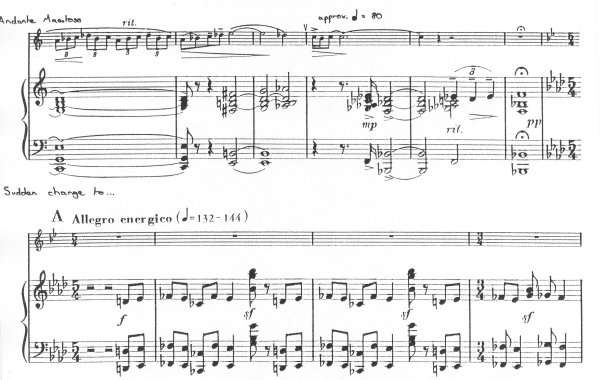


Form



I think that one of the most striking differences between the two concerti is the structural differences. The Haydn is a typical Classical concerto and is written in the form of three movements: fast – slow – fast. The Arutiunian is written without a break and is divided into perhaps six sections. The Haydn opens with an allegro in Sonata form and apart from a brief episode in Cminor, the structure of the three sections of a sonata form: exposition, development and recapitulation is reasonably regular, in both form and tonal structure. Consequently, the interest lies mainly in the beautifully varied rhythms of the solo part, which soars up to the high Bb in bar 110. The second and third movements are again very regular in form, using ternary and binary forms, which were used extensively in the Classical period.
So, as you can see the two concerti are quite different in form. You can see this more clearly by looking at the comparison (look forward two pages). The Haydn and Arutiunian are similar in that they both last approximately the same in duration (the Haydn c.14-15mins and the Arutiunian is c.15-16mins), but the main similarity comes from looking at the first movement of the Haydn and the Arutiunian as a whole because the Arutiunian is, strictly speaking, a concertino rather than a true concerto, as revealed in its formal outlines. So the Arutiunian is like a massive extension of the first movement of the Haydn as the Arutiunian is a single sonata-form movement with a slow episode inserted between the development and recapitulation sections. Arutiunian said when I asked him about the form he composed it in:
"I tried to avoid the 3-movement structure of the piece and gathered in one part, with the middle section slower, under the sourdina. Later on, in 1977, a wonderful cadence was written for the Concerto by a well-known trumpetist, soloist of the Bolshoy theatre Timofey Dokshitser"
Another similarity is that they both have one cadenza, although not at the same place during the concerto. The cadenza in the Haydn comes at the end of the first movement and the cadenza in the Arutiunian comes a few bars before the end of the entire work. At the beginning of the Arutiunian he blends a cadenza-like opening for the trumpet which has a fairly static accompaniment.
Listen to sample no. 10 - (RealAudio)
They both start and finish in the same key and the main themes are usually in the tonic, except for the development sections, because the basis for the form they are written in requires them to do so. In this sense, the opening themes of each concerto (at b.37 and A) are also used in the development sections. Both concerti have orchestral introductions before the trumpet soloist takes up the main theme.
The Haydn has clear-cut sections and movements indicated by a change of key or tempo. Arutiunian manages to link the sections with more variety. He gives the orchestra smooth linking bridges into the slower sections with the use of ralls, rits, and the diminution of a melody so the music effortlessly glides into the slow episodes. But when the tempo 1 (e.g. at G) returns then there is a sudden change of tempo and key.

MUSIC EXAMPLE ~ Arutunian: Accomp. A + before
Proportion and balance has always been a Classical feature and the Haydn is no exception as all three movements are roughly the same in duration.
Both the Haydn and Arutiunian are based on the principles of repetition and contrast, variation, and development.